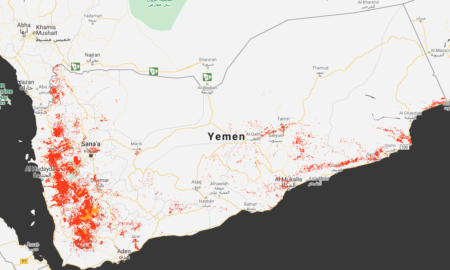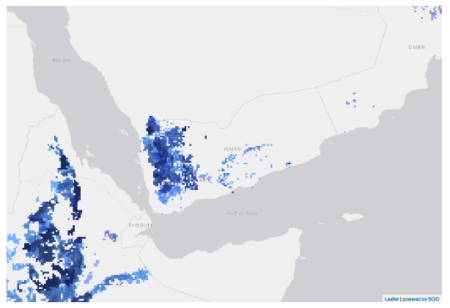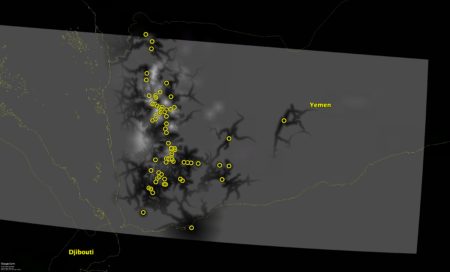- Agricultural diversification promotes multiple ecosystem services without compromising yield. Meta-meta-analysis shows diversification is good for biodiversity, pollination, pest control, nutrient cycling, soil fertility, and water regulation and not bad for crop yields either.
- Holocene land and sea‐trade routes explain complex patterns of pre‐Columbian crop dispersion. Cherimoya reached the Andes by boat.
- Safeguarding and using global banana diversity: a holistic approach. 1617 banana accessions from 38 countries maintained in an in vitro collection, backed-up in cryo; over 18,000 samples distributed to researchers and farmers in 113 countries in 35 years. And that’s just the basics.
- Designing sustainable pathways for the livestock sector: the example of Atsbi, Ethiopia and Bama, Burkina Faso. It’s not just a straight choice between intensive or extensive production, stop with the dichotomies.
- Moving health to the heart of agri-food policies; mitigating risk from our food systems. It’s difficult to separate food from health; and yet…
- Genes derived from ancient polyploidy have higher genetic diversity and are associated with domestication in Brassica rapa. Agriculture depends on polyploidy.
- Genetic diversity is indispensable for plant breeding to improve crops. Plant breeding from an industry perspective, using the Brassicaceae as a case study.
- Yield, yield stability and farmers’ preferences of evolutionary populations of bread wheat: A dynamic solution to climate change. A totally different perspective to the above, using a totally different crop. Compare and contrast.
- Enhancing seed conservation in rural communities of Guatemala by implementing the dry chain concept. Cool way for farmers to save their seeds so they can do the above.
- Landrace hotspots identification in Europe. Where to implement the above.
- Innovation and the commons: lessons from the governance of genetic resources in potato breeding. This is a tricky one. Near as I can figure it, the authors are trying to say that it’s difficult to govern genetic resources apart from the tools needed to develop and use them. But hey, you have a go.
- Conservation of Native Wild Ivory-White Olives from the MEDES Islands Natural Reserve to Maintain Virgin Olive Oil Diversity. I did not have an endemic insular wild albino olive on my bingo card.
- Agri-nutrition research: Revisiting the contribution of maize and wheat to human nutrition and health. Staple cereals are more nutritious than often thought.
- On the origin and dispersal of cultivated spinach (Spinacia oleracea L.). Spinach originated more eastward than often thought.
- What plant is that? Tests of automated image recognition apps for plant identification on plants from the British flora. Botanists shouldn’t give up their day jobs.
Genebanks and Food Security in a Changing Agriculture
This special issue results from a renewed call to demonstrate the value-in-use of conserving and supplying plant genetic resources conserved in genebanks to researchers, plant breeders, and farmers. We present these studies as a collective contribution to a relatively small body of literature that highlights not only the importance of crop plant diversity managed by genebanks but also the diversity of genebank functions and uses.
The special issue is of Food Security.
Here’s the running order:
- Valuing genebanks — Melinda Smale, Nelissa Jamora
- Conserving genetic resources for agriculture: economic implications of emerging science — Douglas Gollin
- The contribution of the International Rice Genebank to varietal improvement and crop productivity in Eastern India — Donald Villanueva, Melinda Smale, Nelissa Jamora, Grace Lee Capilit
- Dynamic conservation of genetic resources: Rematriation of the maize landrace Jala — Vanessa Ocampo-Giraldo, Carolina Camacho-Villa, Denise E. Costich
- Andean potato diversity conserved in the International Potato Center genebank helps develop agriculture in Uganda: the example of the variety ‘Victoria’ — Vivian Bernal-Galeano, George Norton, David Ellis, Noelle L. Anglin
- The contribution of the CIAT genebank to the development of iron-biofortified bean varieties and well-being of farm households in Rwanda — Stefania Sellitti, Kate Vaiknoras, Melinda Smale, Nelissa Jamora
- Use and benefits of tree germplasm from the World Agroforestry genebank for smallholder farmers in Kenya — Kavengi Kitonga, Nelissa Jamora, Melinda Smale, Alice Muchugi
- The tale of taro leaf blight: a global effort to safeguard the genetic diversity of taro in the Pacific — Sefra Alexandra, Nelissa Jamora, Melinda Smale, Michel E. Ghanem
- Transferring diversity of goat grass to farmers’ fields through the development of synthetic hexaploid wheat — Hafid Aberkane, Thomas Payne, Masahiro Kishi, Melinda Smale, Ahmed Amri
- ‘Warehouse’ or research centre? Analyzing public preferences for conservation, pre-breeding and characterization activities at the Czech genebank — Nicholas Tyack, Milan Ščasný
Kudos to my colleague Nelissa Jamora for making it happen.
Mapping gaps in genebank collections, or trying to
So the original idea of this post was to document how I fed accession locality data into two new online mapping tools I had recently run across, and then maybe even mashed up the results. It didn’t quite work out that way, but I did spend quite a bit of time on trying to make it happen, so I want to get some kind of blog post out of it anyway. So here goes.
The two new tools are:
- The Global Accessibility Mapping Interactive Accessibility Tool. This enables the user to create a map showing travel time to a set of points of their choice.
- Crop-Climate Suitability Mapping. “A continuously updatable crop suitability geovisualization application for locating the fundamental climate niche of select crops across geographies and temporal scales.”
My thought was to get a bunch of localities for landraces of a crop from Genesys, plug them into the accessibility tool, and then compare the output of that with the overall suitability map for the crop in the region in question. Result: areas suitable for the crop but far from locations of current genebank accessions. That is, priorities for further collecting. Or at least one possible approach to prioritizing collecting. 1
The first bit was easy enough. I got locality data on barley accessions from Yemen out of Genesys, fiddled with the CSV file a bit, uploaded it into the accessibility tool, ran it, and eventually downloaded a GeoTIFF, which you can upload into Google Earth.
The next step was not so straightforward. I was just not able to get a sensible map for barley in Yemen out of the Crop-Climate Suitability Mapping tool. And I did try. A lot. All I got was the whole of Yemen being classified as “pessimal” for barley, which can’t be right. “Max agriculture extent” was not bad, but no amount of fiddling with the parameters allowed me to produce a mad showing where barley might be expected to grow within that area. But even if I had succeeded, it was not clear to me how I could have used the results outside the confines of the tool itself. There’s no way to download the map, that I could find, apart from a screenshot like this one, which just shows that wherever there is agriculture in Yemen is abysmally bad for barley (red means “pessimal”, orange merely unsuitable).

But having invested quite a bit of time already, I decided to fall back on SPAM. The Spatial Production Allocation Model is still the go-to tool for crop suitability mapping, it seems. And the maps you can make online, such as this one for barley, are nice.

There’s not much more you can do with this, though. You can map accessions from Genesys from the same menu, though not, alas, on the same map as the suitability results. However, SPAM does also provide downloadable data for barley, which comes as part of a huge bunch of global GeoTIFFs. I uploaded that into Google Earth along with the accessibility map.
Here’s what I got.
Ok, not great, I admit. The colour from both the accessibility and SPAM results disappeared when imported in Google Earth, so now suitability is the lighter colour and accessibility the dark streaks. I’ve overlapped the layers so that if you see any light colour, that shows places which are suitable for barley but relatively inaccessible from the locations of other barley accessions (the yellow circles). Those could be your priority collecting localities, in other words.
So not great, but not bad either. At least as a conversation starter. So don’t let me down, start a conversation below…
On being ambitious for agrobiodiversity
The authors of “Set ambitious goals for biodiversity and sustainability” are not kidding around:
In response to the goals proposed in the draft post-2020 Global Biodiversity Framework (GBF) made public by the CBD, we urge negotiators to consider three points that are critical if the agreed goals are to stabilize or reverse nature’s decline. First, multiple goals are required because of nature’s complexity, with different facets—genes, populations, species, deep evolutionary history, ecosystems, and their contributions to people—having markedly different geographic distributions and responses to human drivers. Second, interlinkages among these facets mean that goals must be defined and developed holistically rather than in isolation, with potential to advance multiple goals simultaneously and minimize trade-offs between them. Third, only the highest level of ambition in setting each goal, and implementing all goals in an integrated manner, will give a realistic chance of stopping—and beginning to reverse—biodiversity loss by 2050.
What does “the highest level of ambition” mean for genetic diversity? Check out the handy table provided.
And there’s also a box listing the red lines for the ecosystem, species and genetic diversity goals. This last should:
- Include maintenance of genetic diversity—the raw material for evolutionary processes that support survival and adaptation; population size is not an adequate proxy for this.
- Be set at the highest ambition level (e.g., above 90% of genetic diversity maintained).
- Focus on populations and their adaptive capacity and include wild species and domesticated species and their wild relatives.
No word in this paper on how to measure whether that 90% figure is being met and maintained, for all species. That’s a whole other story, that some of the authors are actively working on. Fingers crossed.
A bean thread for the ages
Since I’m on a Twitter thread kick, get a load of this mega-thread on beans from Jorge Berny.
Beans are getting popular and they have helped me endure grad school. I´ll post some of my favorites while this pandemic endures.
Tzama´ are mostly grown in Southern Mexico, Belize and Guatemala. Planted later, as a relay after maize, with a shorthish cycle. Tasty AF. pic.twitter.com/OqAnRedHk7
— Jorge C. Berny Mier y Teran (@JorgeCBerny) March 26, 2020
Here’s the ThreadReader version for those of you who are averse to Twitter. Epic.
And, you can even wear them.

